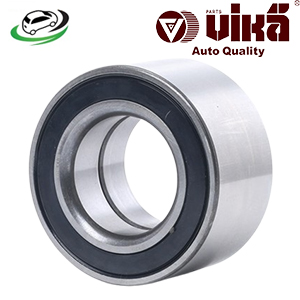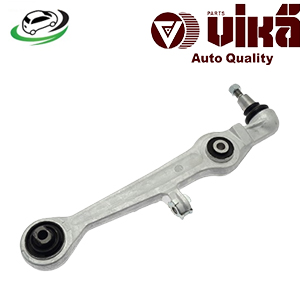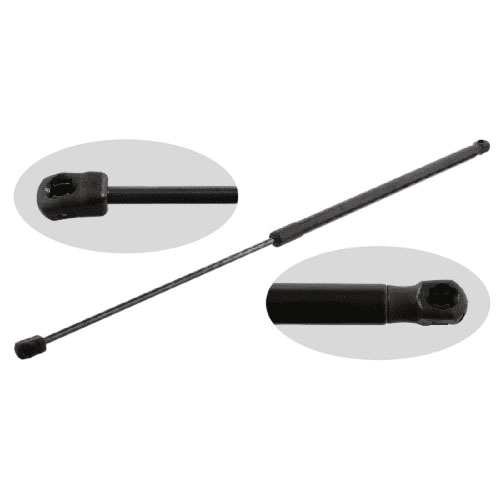-14%
Get VW Passat B6 – 4 Motion 3.6L/FWD 2.0T/FWD 3.6L Engine Hood Gas Filled Strut 3C0823359A in Kenya
Gas strut dampers, also known as gas springs or gas shocks, are crucial components in various mechanical systems, including automotive, industrial, and household applications. They provide controlled movement, stability, and support for a range of applications, from lifting and holding heavy panels to cushioning impacts and vibrations. This comprehensive guide delves into the design, function, types, applications, benefits, and maintenance of gas strut dampers.
Design and Function
Design:
A gas strut damper consists of several key components:
- Cylinder: The main body of the strut, typically made of metal, contains the pressurized gas and internal components. The cylinder’s design ensures that it can withstand the pressure exerted by the gas.
- Piston Rod: A rod that extends and retracts within the cylinder. The piston rod’s movement allows the strut to perform its lifting or damping functions.
- Piston: Located inside the cylinder, the piston separates the gas chamber from the oil chamber. It moves within the cylinder, compressing and decompressing the gas to generate force.
- Gas: Typically nitrogen, the gas is pressurized inside the cylinder. This pressurization creates the force needed for lifting or damping.
- Seals: Ensure that the gas remains contained within the cylinder and prevent contamination by dirt and debris.
- End Fittings: Connect the strut to the mounting points on the vehicle or equipment, allowing for secure attachment and movement.
Function:
The primary functions of a gas strut damper are:
- Lifting and Support: Provides the necessary force to lift and hold open heavy panels, such as vehicle hatches or industrial doors. The gas inside the strut creates an opposing force that balances the weight of the panel.
- Damping: Absorbs and cushions impacts and vibrations, reducing the force transmitted through the system. This is achieved through controlled movement of the piston and the gas compression.
- Stabilization: Helps in stabilizing moving parts by providing smooth and controlled motion, which is essential in applications requiring precise positioning and movement.
Types of Gas Strut Dampers
1. Standard Gas Struts:
- Description: These struts provide a constant force to support and lift panels. They are commonly used in automotive and industrial applications.
- Advantages: Reliable and cost-effective, suitable for most standard lifting and support needs.
2. Adjustable Gas Struts:
- Description: Allows for adjustment of the lifting force to accommodate different weights or load conditions. This can be achieved through adjustable valves or external controls.
- Advantages: Versatile and customizable, ideal for applications with varying load requirements.
3. Locking Gas Struts:
- Description: Equipped with a locking mechanism that holds the strut in a fixed position. This is useful for keeping panels or doors securely open.
- Advantages: Provides additional safety by preventing accidental closure or movement, especially in high-load applications.
4. Dampened Gas Struts:
- Description: Includes a damping mechanism that controls the speed of opening and closing. This reduces the impact and vibration during operation.
- Advantages: Ensures smoother motion and reduces the risk of damage from sudden movements.
5. Gas Spring Dampers:
- Description: Specially designed for damping applications where the primary focus is on absorbing shocks and vibrations rather than lifting.
- Advantages: Provides enhanced cushioning and impact absorption, used in applications like machinery and equipment.
Applications
1. Automotive:
- Hatchbacks and SUVs: Gas strut dampers are used to support the rear hatch or liftgate, making it easier to access the cargo area and ensuring smooth operation.
- Engine Hoods: Supports the hood of the vehicle, allowing it to stay open during maintenance and repair tasks.
- Tailgates: Provides assistance in lifting and holding open the tailgate of trucks and vans.
2. Industrial:
- Doors and Panels: Used in industrial doors and access panels to provide smooth operation and support.
- Machinery: Helps in controlling the movement of machinery components, reducing impact and vibration during operation.
- Workbenches: Supports adjustable workbenches or storage compartments, allowing for easy adjustment and stability.
3. Household:
- Cabinets and Drawers: Assists in the smooth operation of cabinet doors and heavy drawers, providing ease of access and reducing strain on hinges.
- Furniture: Used in adjustable furniture, such as office chairs and reclining sofas, to provide comfortable positioning and support.
4. Recreational:
- RV and Boat Storage: Supports storage compartments and access panels in recreational vehicles and boats, ensuring ease of access and stability.
Benefits
1. Enhanced Convenience:
- Effortless Operation: Reduces the physical effort required to open and close heavy panels or doors, enhancing user convenience and comfort.
2. Improved Safety:
- Controlled Movement: Provides smooth and controlled operation, reducing the risk of sudden movements or accidental closures that could cause injury or damage.
3. Durability and Longevity:
- Reduced Wear and Tear: Minimizes strain on hinges, latches, and other components, extending their lifespan and reducing maintenance needs.
4. Versatility:
- Wide Range of Applications: Suitable for various applications, including automotive, industrial, household, and recreational uses, offering reliable performance across different scenarios.
5. Customizability:
- Adjustable Options: Allows for customization to meet specific load requirements and operational needs, ensuring optimal performance for diverse applications.
Maintenance and Troubleshooting
1. Regular Inspection:
- Check for Wear and Tear: Inspect the struts for signs of physical damage, such as bends or leaks. Look for oil residue or gas leakage around the seals.
- Test Operation: Ensure that the struts provide smooth and controlled movement. Difficulty in operation or unexpected behavior may indicate the need for maintenance or replacement.
2. Cleaning:
- Keep Clean: Regularly clean the struts and surrounding areas to prevent dirt and debris from affecting performance. Avoid using harsh chemicals that could damage the seals.
3. Lubrication:
- Pivot Points: Some struts may require periodic lubrication of the end fittings and pivot points to ensure smooth operation.
4. Replacement:
- Signs of Failure: If the struts fail to provide adequate support or damping, or if they show visible signs of damage, replacement may be necessary.
- Procedure: Replacing a gas strut damper typically involves detaching the old strut from the mounting points and installing a new one with the same specifications.
Follow us on Facebook for more parts.





